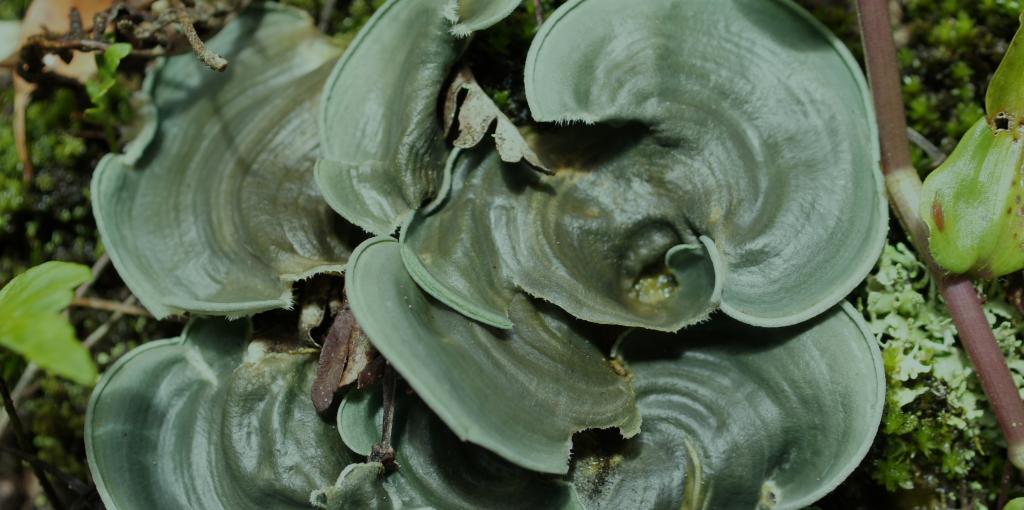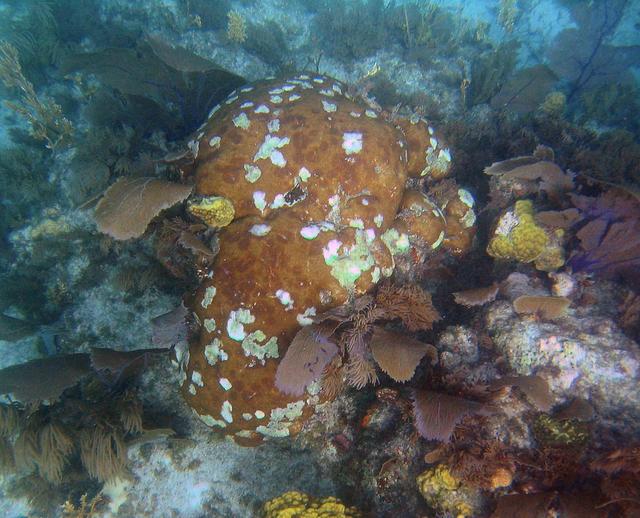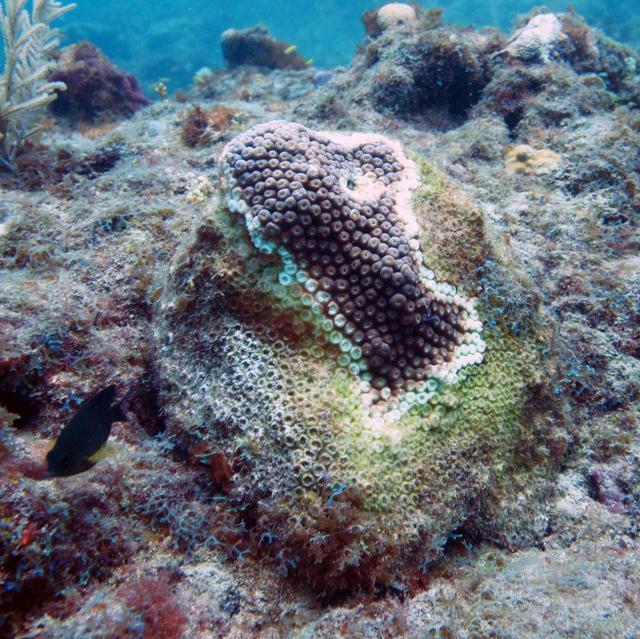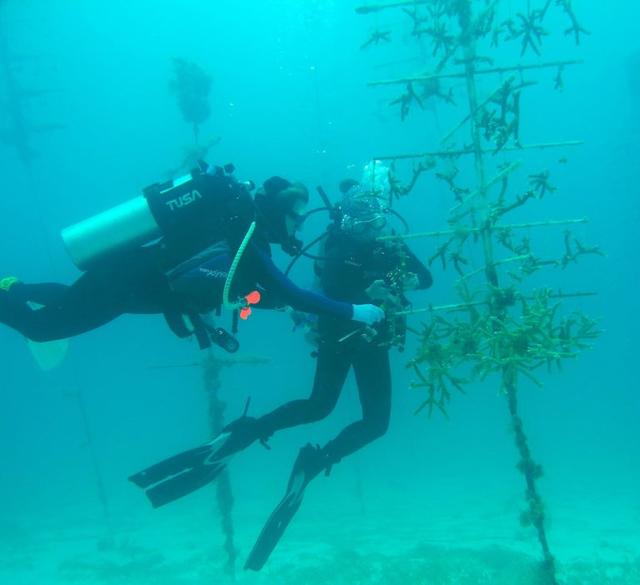Admission CTAs
Reports of New Coral Diseases on South Florida Coral Reefs
As soon as she descended toward the reef on June 4, 2016, her heart sank as she realized several large colonies of the massive starlet coral, Siderastrea siderea, were losing their covering of live tissue in a pattern she had never seen before. “I was shocked,” said Dr. Esther Peters, Term Associate Professor in the Department of Environmental Science and Policy. She was participating with her M.S. graduate student Jessica Havens in Coralpalooza, an annual event organized by the Coral Restoration Foundation to attach nursery-grown small colonies of staghorn coral, Acropora cervicornis, at Carysfort Reef, off Key Largo in the Florida Keys. The massive starlet corals, long considered a hardy species, had multiple denuded skeleton lesions on their surfaces that were accumulating fine algae and sediment. The remaining polyps and connecting tissue (coenenchyme) that produce the skeleton were variably bleached (appeared white to indicate they had lost their symbiotic algae known as zooxanthellae) or darker brown, which was another sign of disease. Almost every colony she encountered was affected.
Dr. Peters sent an e-mail message to a large group of other reef scientists and managers in the South Florida area to notify them of this disturbing finding, which resulted in sharing more observations and has sparked additional efforts to identify the pathogen(s) affecting corals from Martin County to the Dry Tortugas. Although coral diseases have been recognized on tropical Atlantic Ocean/Caribbean Sea reefs since the early 1970s and outbreaks have been documented on Florida Keys reefs, during the last two years several species of corals on reefs off Miami and Ft. Lauderdale have been decimated by a tissue loss disease known as white plague. The “Florida Reef Tract Coral Disease Coordination” group members are investigating potential pathogens in the white plague outbreak, including bacteria, viruses, sedimentation, stormwater and nutrient discharges, and unusually warm seawater temperatures that also resulted in most corals bleaching (another disease) during summer and fall of 2014 and 2015. Disease outbreaks can result from multiple biotic and abiotic factors. Unfortunately, disease reports to the Southeast Florida Action Network of the Florida Department of Environmental Protection (SEAFAN) have continued through the winter and into this summer.
Dr. Peters and another of her M.S. graduate students, Krishna Makineni, dove at a site off Ft. Lauderdale on June 16 and submitted a SEAFAN report, finding a few coral colonies in good condition, but most with tissue loss or filamentous cyanobacteria covering gorgonians (octocorals). Her observations included another recently reported tissue loss disease affecting the great star coral, Montastraea cavernosa.
The group’s disease coordination efforts include sample collection for laboratory analyses during annual coral reef monitoring surveys this summer. Dr. Peters has collaborated on histopathological examinations of diseased coral and other invertebrate tissues and will be working with other experts and graduate students in microbiology, reef ecology, coral physiology, chemistry, and toxicology to study these samples.
Dr. Peters has been involved in coral disease research since its beginning and is an internationally recognized expert on diseases of corals and other reef organisms. Along with Drs. Robert Jonas, Patrick Gillevet, and Alonso Aguirre, she and several ESP graduate students have studied white plague, black-band disease, and other tissue loss diseases. She and Dr. Jonas taught a week-long summer course on “Diseases of Corals and Other Reef Organisms” at Mote Marine Laboratory in the lower Florida Keys for 14 years. Many of their students are now in county, state, and federal agencies, NGOs, or universities working on coral reef conservation issues and research. Dr. Peters participates in the Coral Disease and Health Consortium and has recently studied the histopathology of tissue loss diseases affecting the staghorn corals, a rapidly growing species that is being cultivated throughout the Caribbean to return corals to reefs. Ms. Havens and former ESP Ph.D. student Michelle Ryan set up an experiment this summer to test coral fragment handling methods in the Coral Restoration Foundation’s staghorn coral nursery at The Elbow reef to help improve coral survival when outplanted to reefs by staff and volunteers, as occurred during Coralpalooza (despite Dr. Peters’ sad discovery).
Continuing investigations on environmental changes that are stressing the corals and transferring knowledge through education to effect sociopolitical changes will be needed to conserve our valuable coral reefs.



